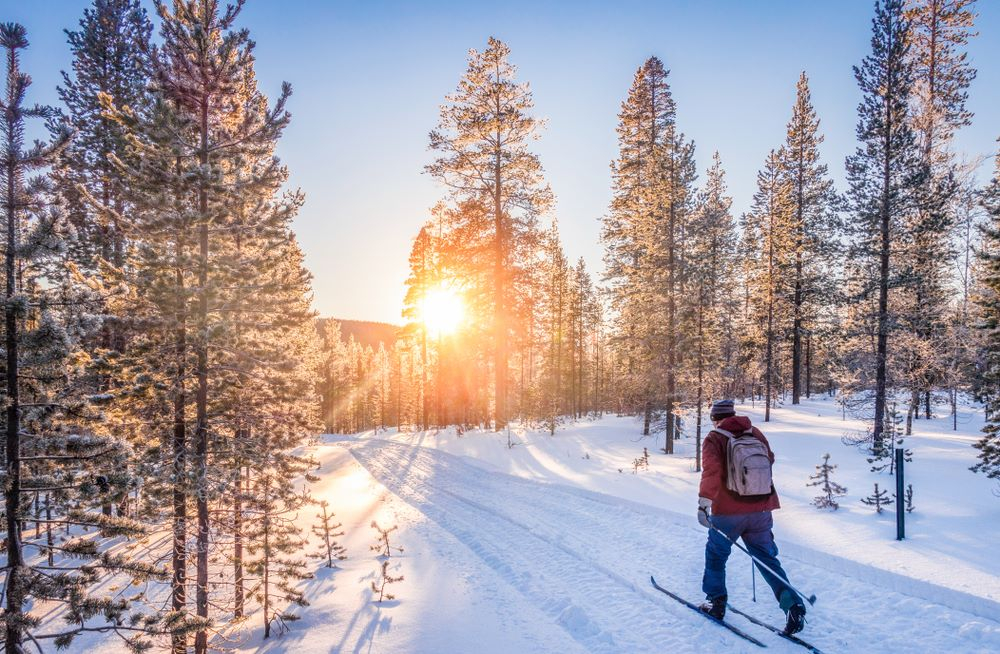Mastering Tree Well Skiing: Techniques & Precautions
Tree well skiing, often hailed as an exhilarating adventure within the world of skiing, offers a unique blend of excitement and challenge. Unlike traditional skiing on groomed slopes, tree well skiing involves navigating through densely forested areas where snow accumulates around the base of trees, forming wells. While this activity can provide an adrenaline rush and a sense of freedom, it’s crucial to understand the risks involved and adopt appropriate safety measures.
Understanding Tree Wells
Tree wells are formed when the branches of trees prevent snow from compacting around their trunks, creating depressions or voids. These voids can be deceptive, often concealed by the surrounding snow, posing a significant hazard to skiers who accidentally fall into them. Once entrapped in a tree well, individuals may find it challenging to extricate themselves due to the deep, loose snow and the constriction caused by the tree branches.
The Dangers of Tree Well Skiing
Tree well skiing presents several inherent dangers, including the risk of suffocation, hypothermia, and injury. In the event of a fall into a tree well, the loose snow can quickly engulf a skier, making it difficult to breathe. Moreover, the compact nature of the snow around the well can lead to rapid heat loss, increasing the likelihood of hypothermia, especially in cold weather conditions.
Techniques For Safe Tree Well Skiing
To mitigate the risks associated with tree well skiing, skiers must employ specific techniques and precautions. One essential technique is maintaining visual contact with fellow skiers to ensure prompt assistance in case of an accident. Additionally, skiers should maintain a safe distance from trees and exercise caution when navigating through densely forested areas.
Proper Equipment for Tree Well Skiing
Equipping oneself with the right gear is paramount for safe tree well skiing. Essential equipment includes avalanche safety gear such as avalanche transceivers, probes, and shovels, which can aid in locating and rescuing individuals trapped in tree wells. Additionally, wearing a helmet and protective gear can minimize the risk of injury in the event of a fall.
Training and Preparation
Before embarking on tree well skiing adventures, skiers should undergo proper training and preparation. This includes familiarizing oneself with avalanche safety protocols, practicing tree well rescue techniques, and honing skiing skills in various terrain conditions. Adequate physical fitness and stamina are also crucial for navigating challenging terrain and responding effectively to emergencies.
Common Mistakes to Avoid
Inexperienced skiers often make common mistakes when venturing into tree well skiing. These include skiing too close to trees, underestimating the depth of snow around tree wells, and failing to communicate effectively with fellow skiers. By avoiding these pitfalls and exercising caution, skiers can minimize the likelihood of accidents and injuries.
The Importance of Avalanche Safety
Avalanche safety is paramount in tree well skiing, as dense forested areas are often prone to avalanches. Skiers should familiarize themselves with avalanche forecasting and terrain assessment techniques to identify high-risk areas and make informed decisions about route selection. Additionally, carrying avalanche rescue gear and practicing companion rescue drills are essential precautions.
Tree Well Skiing Etiquette
Respecting the environment and fellow skiers is essential in tree well skiing. Skiers should refrain from disturbing wildlife, damaging vegetation, or leaving behind any litter. Moreover, maintaining courteous behavior on the slopes, such as yielding to uphill skiers and giving way to faster downhill skiers, fosters a safer and more enjoyable skiing experience for everyone.
Enjoying The Experience Safely
Despite the inherent risks, tree well skiing can be a rewarding and fulfilling experience for adventurous skiers. By prioritizing safety, practicing proper techniques, and staying vigilant on the slopes, skiers can enjoy the thrill of exploring untouched terrain while minimizing the likelihood of accidents.
The Psychological Aspect of Tree Well Skiing
Tree well skiing not only tests one’s physical abilities but also challenges their psychological resilience. The unpredictable nature of tree wells and the potential for accidents can evoke feelings of fear and apprehension. However, by cultivating a positive mindset, staying focused, and trusting in one’s skills and training, skiers can overcome mental barriers and enjoy the adventure to its fullest.
Expert Tips From Experienced Skiers
Experienced skiers offer valuable insights and advice for those venturing into tree well skiing. They emphasize the importance of continuous learning and skill development, advocating for regular practice in diverse terrain conditions. Additionally, seeking guidance from certified instructors and participating in avalanche safety courses can enhance one’s preparedness and confidence on the slopes.
Conclusion
Tree well skiing offers a thrilling and adventurous experience for seasoned skiers seeking new challenges on the slopes. However, it’s crucial to approach this activity with caution, respect the inherent risks, and prioritize safety above all else. By following proper techniques, equipping oneself with the right gear, and staying vigilant on the slopes, skiers can enjoy the beauty of untouched terrain while minimizing the likelihood of accidents and injuries.
FAQs
How Deep Can Tree Wells Be?
Tree wells can vary in depth, ranging from a few feet to several meters, depending on factors such as snowfall accumulation and tree density.
What Should I Do If I Fall Into A Tree Well?
If you find yourself trapped in a tree well, remain calm, try to create space around your face to facilitate breathing, and signal for assistance using your ski poles or voice.
Is Tree Well Skiing Suitable For Beginners?
Tree well skiing is best suited for experienced skiers with advanced skills in off-piste terrain navigation and avalanche safety.
What Precautions Should I Take Before Engaging In Tree Well Skiing?
Before tree well skiing, ensure you have the necessary avalanche safety gear, undergo proper training, assess the terrain for potential hazards, and ski with a companion.
Are Tree Well Skiing Accidents Common?
While tree-well skiing accidents are relatively rare, they can have severe consequences due to the potential for suffocation and injury. Proper preparation and caution are essential to mitigate risks.














